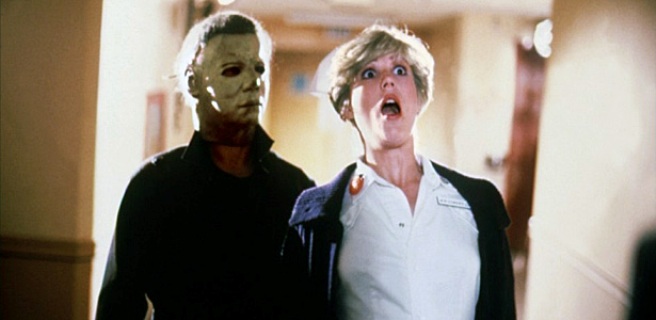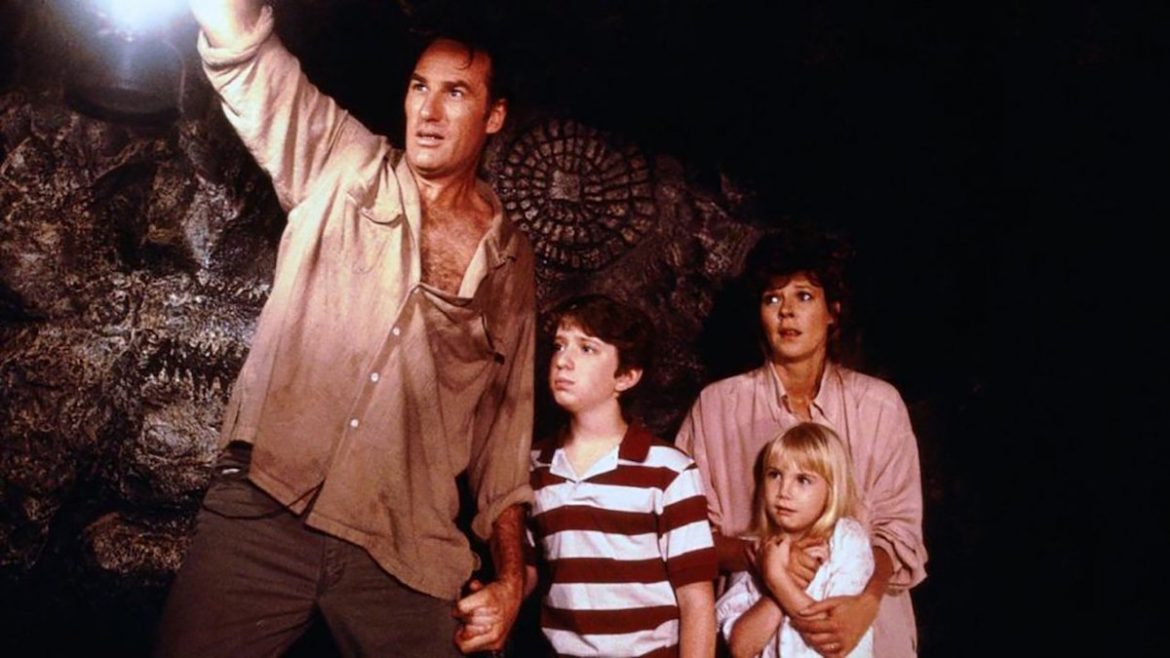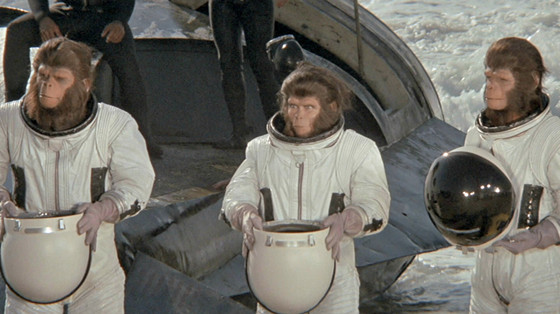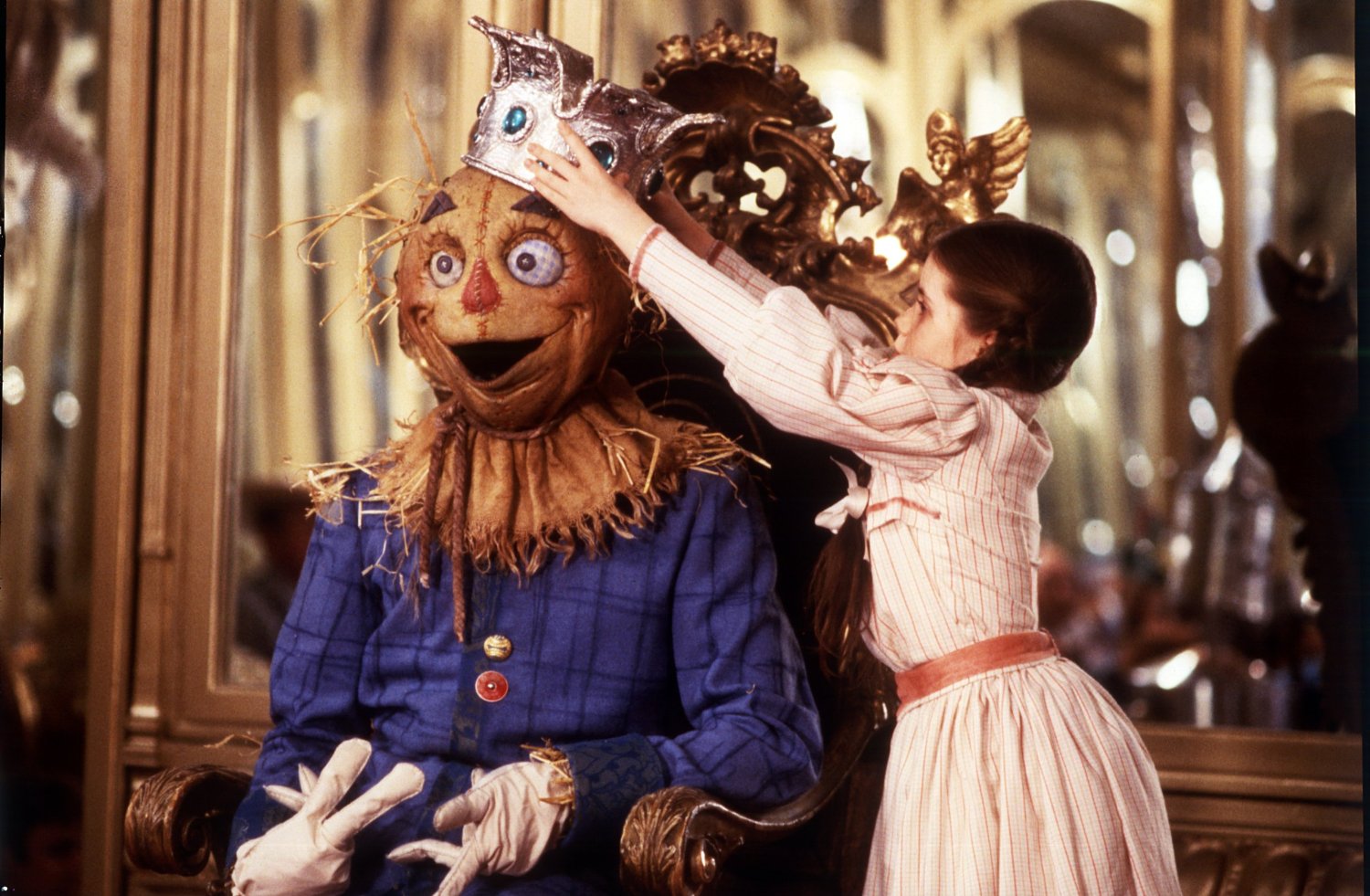6. Halloween 2 (1981)

With his first two feature films, Dark Star (1974) and Assault on Precinct 13 (1976), John Carpenter had demonstrated his ability to direct solid genre pieces. Something of a bargain-basement auteur, Carpenter could write, direct, edit and compose scores. His singular vision, drive and determination produced films whose quality and inventiveness belied their low-budgets.
With 1978’s Halloween, Carpenter not only invented the slasher film, he demonstrated that people would queue around the block for tense, visceral horror, and would part with their hard-earned cash by the fistful. The draw of Carpenter’s film was as unstoppable as Michael Myers himself.
Although investors eager to replicate the success of Halloween hugely increased the production budget for the sequel, Carpenter refused to direct. He has never been one to feel comfortable going over old ground, but he did agree to write the story. Debra Hill returned as co-writer, and this continuity from the original story is what makes Halloween II interesting.
Picking up immediately after the final shot of the first film, the story focuses on the continued terrorisation of Laurie Strode (Jamie Lee Curtis) by Michael Myers (Dick Warlock) as Dr Sam Loomis (Donald Pleasance) tries desperately to find and capture him. Most of the action takes place in the eerie corridors of Haddonfield Memorial Hospital, the skeleton night-time staff gradually falling victim to Myers.
In the wake of Halloween’s box-office success, numerous knock-offs had upped the stakes, titillating audiences with ever more reliance on gore and nudity but sacrificing drama and tension. While Halloween II does show more flesh and blood than its predecessor, much of the style and brooding atmosphere is retained by the involvement of Carpenter and Hill. Carpenter’s insistent, off-kilter score also makes a return – as much a character in the story as any physical presence we see on screen.
7. Poltergeist II: The Other Side (1986)

Poltergeist II: The Other Side (1986) was considered a huge failure after the runaway success of its predecessor, Poltergeist (1982). Reviews were more negative than positive, and it made a significantly smaller profit at the box-office than had been hoped. However, it has stood the test of time as a wonderful continuation of the story of the Freeling family and their battle with the supernatural.
The Freelings were happily living the American dream. Three children, a dog, a modern suburban home. In Poltergeist, that perfect nuclear family was almost torn apart by the paranormal forces that invaded their home and abducted their youngest daughter, Carol-Anne (Heather O’Rourke).
Poltergeist II: The Other Side explores the after effects of the Freelings’ terrifying ordeal and faces them off against an even more sinister attacker. Having lost his home and job, Steven Freeling (Craig T. Nelson) is providing for his family by selling vacuum cleaners. Steven and his wife, Diane (JoBeth Williams) believe that the horror of their supernatural experience is behind them, but they soon find out that things are going to get a lot worse.
The enemy in Poltergeist was a throng of faceless entities. Here there’s a clearly defined presence: his gaunt, skeletal face all at once human and inhuman. A long-dead preacher, Rev. Henry Kane (Julian Beck), has his sights set on Carol-Anne and will stop at nothing to make her his. Kane is the horrifying centre of the movie. His Southern drawl and initially kind words, disguise the hate and greed that drive his quest. He is a nightmarish figure whose appearance in the film has haunted audiences for 30 years.
The threat to the Freelings is more personal in this film and, when Kane uses a variety of nefarious methods to try to reach Carol-Anne through her family it really feels like the terror has stepped up a notch. More than ever the family must stick together to drive away the forces of darkness.
8. National Lampoon’s European Vacation (1985)

The Griswolds, led by Clark (Chevy Chase) and Ellen (Beverly D’Angelo) are the quintessential American family. Clark is everyman – he works too hard and wants to spend more time with his family. In National Lampoon’s Vacation (1983) they set off on a roadtrip from Chicago to California. Along the way they encountered misfortune after misfortune, often down to Clark’s bumbling stupidity. However, his eternal optimism and good heartedness saw him through in the end.
Audiences loved the Griswolds so the wheels were set in motion for the development of a sequel – National Lampoon’s European Vacation (1985). John Hughes (The Breakfast Club, Ferris Bueller’s Day Off, Home Alone) returned to write the story, while Chase and D’Angelo reprised their roles. Their children, Rusty and Audrey, were recast as Anthony Michael Hall who played Rusty in the original film had signed up to star in Weird Science (1985). This led to a running gag where the children were played by different actors in each of the four Chase movies.
Sending the family on a trip to Europe puts them in classic fish-out-of-water territory. The Griswolds visit London, Paris, Germany and Rome and, in each new destination, their inability to interact with the locals causes a catastrophic sequence of mishaps. Their antics are hilarious and immediately familiar, a perfect parody of the American tourist.
The scant plot nevertheless delivers a sequence of brilliant set pieces, including a recurring appearance by Eric Idle of Monty Python’s Flying Circus fame. While the film unashamedly paints caricatures of European cultures with broad-brushstrokes, the Griswolds do not make any of these stereotypical assumptions themselves. They are essentially kind-hearted innocents abroad – meeting strangers with open arms, unaware of how brash and offensive they can seem to others.
9. Escape from the Planet of the Apes (1971)

The Planet of the Apes movie franchise celebrates its 50th anniversary in 2018. While the classic story of a world where apes rule over humans has been followed by four sequels, a remake, three reboot/prequels and both live-action and animated TV series, it’s the third film, Escape from the Planet of the Apes (1971) that holds the key to the franchise’s longevity, and to sci-fi fans’ continuing fascination with its timelines and paradoxes.
Despite the second film in the series, Beneath the Planet of the Apes (1970), leaving no doubt as to the fate of its protagonists and the world at large, a sequel was demanded. An ingenious plot was contrived, allowing the story to continue – three apes travel into space, and through time, in the rocket-ship that the human astronauts had arrived in.
The apes’ escape from the future and arrival on Earth in 1973 also solved a financial problem. The vastly reduced budget assigned for this instalment put special effects and the widespread use of make-up and prosthetics out of the filmmakers’ reach. But with a story requiring the presence of only three ape surrounded by contemporary humans, costume and make-up costs could be kept to the bare minimum.
It’s the leap backwards in time that sets up the most interesting element of the Apes franchise timeline – sending sentient apes back in time accelerates the evolution of the ape population, eventually enabling them to take over the world. Heated debate continues in the fan community over whether or not this event alters events in the run up to the first two parts of the series.
The writer of the original novel Planet of the Apes (1963), Pierre Boulle, was consulted during the writing of Escape from the Planet of the Apes, and helped to develop the strongly satirical tone of the film. The racial conflict and mistrust themes developed here remained central to the subsequent films, Conquest of the Planet of the Apes (1972) and Battle for the Planet of the Apes (1973).
10. The Return To Oz (1985)

The Wizard of Oz (1939) is one of the all-time classics. For over 40 years nobody dared to even contemplate a sequel. But why not? The original was based on just one of almost 20 books written about the land of Oz by L. Frank Baum. There had been other movie versions of Oz stories made before 1939 but, in light of audiences’ adoration for the Judy Garland film, studios had been cautious.
Then, in the early 1980s, Walter Murch (sound designer on the Godfather trilogy, Apocalypse Now, and the early works of George Lucas) started to develop a follow-up. By developing and then directing, Murch made the land of Oz more faithful to the source material and, as a result, realised a much darker world than the one audiences were familiar with. His film, Return to Oz (1985), was based on elements of Baum’s novels The Marvelous Land of Oz (1904) and Ozma of Oz (1907).
Where 1939’s Wizard of Oz has a dreamlike atmosphere – the characters mirroring Dorothy’s friends and acquaintances, the oddly familiar locations and situations – the Oz of Murch’s film is wholly nightmarish. Faruza Balk’s Dorothy hasn’t been herself since her first journey to Oz and has been committed to an institution where she is subjected to electrotherapy in an attempt to cure her melancholic state of mind.
Murch’s version of Oz is populated by freakish and inhuman characters. She is surrounded by the uncanny, the threatening, and the mysterious. Gone are the approachable, supportive and friendly Scarecrow, Cowardly Lion and Tin Man. They are replaced by the Gump, Jack Pumpkinhead and Tik-Tok – while these characters befriend Dorothy, they are designed to be discomforting and illogical.
As a sequel to a firm family favourite, Return to Oz was an unusual film for Disney to make. Uncompromising in its bleakness it is, nevertheless, a fascinating glimpse of the Oz that L. Frank Baum had originally imagined. The sets, costumes and creature designs are outstanding, and the film received an Academy Award nomination for Best Visual Effects.
A cult following has built up around the film in the 30 or so years since its release, many an 80s child fondly (or not so fondly) remembers the unusual characters. It’s time for fans of the dark fantasy worlds of The Dark Crystal (1982), Labyrinth (1986) and many of Tim Burton’s films to take a second look at Return to Oz.
Author Bio: Ben Rive is the founder and creative director of Snowcat Cinema (www.snowcatcinema.co.uk), a pop-up cinema screening cult classics, lesser-known and lost movies. Ben is obsessed with film and lists. Writing lists of films is a good way to feed these obsessions.